Difference between revisions of "Leather damages"
| (47 intermediate revisions by one user not shown) | |||
| Line 9: | Line 9: | ||
| − | There are various | + | There are various types of leather damage. It can tear, suffer burn holes, [[Colour fastness - Light fastness of leather|fade in sunlight]] or become brittle. Leather can also become hard due to ageing. |
==Signs of wear on leather== | ==Signs of wear on leather== | ||
| − | Leather is a durable material. | + | Leather is a [[leather quality|durable material]]. That is why it was used long ago as [[Leather saddle|material for saddles]] or [[leather tents & Tent walls|tarpaulins]]. Nowadays, [[car leather|car seats]] or [[leather furniture|furniture]] covers made of leather are considered to be durable and of high [[leather quality|quality]]. Leather is often mechanically stressed, leading to general signs of wear and traces of use. The surface is scratched or the [[finish|surface colour]] rubs off. |
| − | + | ||
| − | + | ||
<p align=center> | <p align=center> | ||
| − | [[bild:Möbelleder-verschleiß-01.jpg| | + | [[bild:Möbelleder-verschleiß-01.jpg|500px]] |
| − | + | ||
</p> | </p> | ||
<p align=center> | <p align=center> | ||
| + | [[bild:Möbelleder-verschleiß-02.jpg|250px]] | ||
[[bild:Auoleder-verschleiß-01.jpg|250px]] | [[bild:Auoleder-verschleiß-01.jpg|250px]] | ||
| − | |||
</p> | </p> | ||
<p align=center> | <p align=center> | ||
| − | '' | + | [[bild:Auoleder-verschleiß-02.jpg|500px]] |
| + | </p> | ||
| + | <p align=center> | ||
| + | ''Typical wear on [[car leather|car]] and [[leather furniture|furniture]] leather.''<br></p> | ||
<p> </p> | <p> </p> | ||
| − | + | As long as the damages are not too severe, most of them can be coloured, filled and [[Leather repair|repaired]] by suitable [[leather care]] and can be protected against further wear. | |
| − | + | <p align=center> | |
| − | + | <flashow>//www.youtube.com/v/yL-7J_jp6jI&fs=1&color1=0x660000&color2=0x550000&border=1|width=500|height=281,25</flashow> </p> | |
| + | <p align=center> | ||
| + | ''[https://www.colourlock.com/How-To-s/Furniture-Leather/ leather repair] - [[furniture leather]]''</p> | ||
| − | === | + | <p align=center> |
| − | + | <flashow>//www.youtube.com/v/uybAYTtmi9s&fs=1&color1=0x660000&color2=0x550000&border=1|width=500|height=281,25</flashow> </p> | |
| + | <p align=center> | ||
| + | ''[https://www.colourlock.com/How-To-s/Car-Leather/ leather repair] - [[car leather]]''</p> | ||
| − | |||
| + | [[bild:Colourlock-02.jpg|16px]] -> [https://www.colourlock.com/How-To-s/Car-Leather/How-to-repair-colour-damages-on-leather-car-seats/ COLOURLOCK - TREATMENT OF CAR LEATHER] | ||
| + | <br> | ||
| + | [[bild:Colourlock-02.jpg|16px]] -> [https://www.colourlock.com/How-To-s/Furniture-Leather/How-to-clean-and-protect-leather-furniture/ COLOURLOCK - TREATMENT OF FURNITURE LEATHER] | ||
| + | <br> | ||
| + | [[bild:Lederzentrum-2016-08-Mini-viereckig-Rand-02.jpg|16px]] -> In German: [http://www.lederzentrum.de www.lederzentrum.de] | ||
| + | <br> | ||
| + | [[bild:Globus.jpg|16px]] -> Rest of the world: [http://www.lederzentrum.de/international.html#partner partners worldwide] | ||
| + | |||
| + | ==[[Leather quality]]== | ||
| + | Traces of use and signs of wear can look different and depend largely on the [[leather quality|quality of the leather]] and the [[leather colour|colour]]. | ||
| + | |||
| + | When the leather is of good substance, the [[finish|finish (surface pigmentation)]] rubs off over time. The leather itself remains undamaged. If the leather itself is unstable, the leather cracks under the [[finish]] and the paint layer cannot withstand the lack of stability in the [[leather|fibre structure of the leather]]. | ||
| + | |||
| + | |||
| + | <p align=center> | ||
| + | [[bild:Moebel-Abrieb-01.jpg|500px]] | ||
| + | </p> | ||
<p align=center> | <p align=center> | ||
| − | + | [[bild:KFZ-Abrieb-01.jpg|500px]] | |
| − | [[bild:KFZ-Abrieb-01.jpg| | + | |
</p> | </p> | ||
<p align=center> | <p align=center> | ||
| − | '' | + | ''Typical wear on [[leather quality|good quality]] [[car leather|car]] and [[leather furniture|furniture leather]].''<br></p> |
<p> </p> | <p> </p> | ||
<p align=center> | <p align=center> | ||
| − | [[bild:Moebel-Brüche-02.jpg| | + | [[bild:Moebel-Brüche-02.jpg|500px]] |
| − | + | ||
</p> | </p> | ||
<p align=center> | <p align=center> | ||
| − | '' | + | [[bild:Moebel-Brüche-01.jpg|500px]] |
| + | </p> | ||
| + | <p align=center> | ||
| + | [[bild:Hard-finish-crack-leather-03.jpg|500px]] | ||
| + | </p> | ||
| + | <p align=center> | ||
| + | ''Typical cracks in leather with poorer [[leather quality]].''<br></p> | ||
<p> </p> | <p> </p> | ||
| − | * | + | <p align=center> |
| + | [[bild:Hard-finish-crack-leather-02.jpg|500px]] | ||
| + | </p> | ||
| + | <p align=center> | ||
| + | ''[[Crosslinker#Spider's web effect by aziridine crosslinker|Typical cracks]] in the [[finish]] due to poor [[leather quality|finish quality]].''<br></p> | ||
| + | <p> </p> | ||
| + | |||
| + | * Further information: [[Leather quality]] | ||
==Grease and sweat stains on leather== | ==Grease and sweat stains on leather== | ||
| − | + | Sweat and body grease from skin or the oils from the hair penetrate the surface of the leather. This is caused over a period of time and due to regular contact. These fats oxidize (degrade) and deprive the leather of the effect of the [[tannins]]. The leather fibre loses its structure and disintegrates. The [[pH value|pH value]] of the sweat can also be a contributing factor. | |
| − | + | Typical areas for such damages are [[car leather|armrests of cars]], [[Leather steering wheel|steering wheels]] and [[leather furniture|furniture]]. Men sweat more. Therefore, the disintegration is always particularly strong where men have contact with leather. Regular [[leather cleaner|cleaning]] and [[leather care|maintaining]] of the leather delays such changes significantly. Furniture should also be provided with blankets or pillows in permanent skin and hair contact areas. Oxidative damage from skin and hair are caused by continuous use. With regular cleaning and care treatments, the process can be significantly delayed. | |
<p align=center> | <p align=center> | ||
| − | + | [[bild:Armlehne-Auto-01.jpg|500px]] | |
| − | [[bild:Armlehne-Auto-01.jpg| | + | |
| − | + | ||
</p> | </p> | ||
<p align=center> | <p align=center> | ||
| − | '' | + | [[bild:Auto-Armlehne-Oxidation-001.jpg|250px]] |
| + | [[bild:Auto-Armlehne-Oxidation-002.jpg|250px]] | ||
| + | </p> | ||
| + | <p align=center> | ||
| + | ''Typical changes of car arm rests after continuous use.''<br></p> | ||
<p> </p> | <p> </p> | ||
<p align=center> | <p align=center> | ||
| − | [[bild:Lenkrad-abgegriffen-01.jpg| | + | [[bild:Lenkrad-abgegriffen-01.jpg|500px]] |
| − | + | ||
| − | + | ||
</p> | </p> | ||
<p align=center> | <p align=center> | ||
| − | '' | + | [[bild:Lenkrad-abgegriffen-02.jpg|250px]] |
| + | [[bild:Lenkrad-abgegriffen-03.jpg|250px]] | ||
| + | </p> | ||
| + | <p align=center> | ||
| + | ''Typical damage of [[Leather steering wheel|steering wheels]].''<br></p> | ||
<p> </p> | <p> </p> | ||
<p align=center> | <p align=center> | ||
| − | [[bild:Fettkragen-02.jpg| | + | [[bild:Fettkragen-02.jpg|500px]] |
| − | [[bild:Fettkragen-01.jpg| | + | </p> |
| − | [[bild:Einlage-Schweiss-01.jpg| | + | <p align=center> |
| + | [[bild:Fettkragen-01.jpg|250px]] | ||
| + | [[bild:Einlage-Schweiss-01.jpg|250px]] | ||
</p> | </p> | ||
<p align=center> | <p align=center> | ||
| − | '' | + | ''Typical fat damages: Grease on the collar in [[leather clothing|clothing]] or sweat damages in [[leather shoes|shoes]].''<br></p> |
<p> </p> | <p> </p> | ||
<p align=center> | <p align=center> | ||
| − | [[bild:Moebel-Oxidation-002.jpg| | + | [[bild:Moebel-Oxidation-002.jpg|500px]] |
| − | + | ||
| − | + | ||
</p> | </p> | ||
<p align=center> | <p align=center> | ||
| − | '' | + | [[bild:Moebel-Oxidation-003.jpg|250px]] |
| + | [[bild:Fettstellen-Moebel-01.jpg|250px]] | ||
| + | </p> | ||
| + | <p align=center> | ||
| + | ''Typical changes of furniture in head and armrest areas.''<br></p> | ||
<p> </p> | <p> </p> | ||
| − | + | The question frequently arises in the [[leather furniture|furniture sector]] whether the consumption of medication and the subsequent perspiration contributes to leather damage and ageing. Since there is hardly a person who has not taken medication at some time, their leather clothing, including shoes, does not appear to have suffered perceptibly. Therefore the basic risk from medication must be discounted. Only in a very few individual cases, which may be associated with liver disease, there does appear to be medicines that change the sweat in such a way that the leather ages more rapidly and becomes fragile, even during the warranty period. However, this has not been subject to scientific investigation and such cases are rare. | |
<p align=center> | <p align=center> | ||
| − | <flashow> | + | <flashow>//www.youtube.com/v/5TtjV8iqgJ0&fs=1&color1=0x660000&color2=0x550000&border=1|width=500|height=281,25</flashow> |
</p> | </p> | ||
<p align=center> | <p align=center> | ||
| − | + | ''The professional cleaning and [[Leather repair|colouration]] of slightly damaged [[leather furniture|furniture leather]].''<br></p> | |
| − | |||
| − | |||
| + | [[bild:Colourlock-02.jpg|16px]] -> [https://www.colourlock.com/How-To-s/Furniture-Leather/How-to-remove-grease-stains-from-headrests-and-armrests/ COLOURLOCK - GREASY STAINS ON HEAD OR ARMREST AREAS] | ||
| + | <br> | ||
| + | [[bild:Lederzentrum-2016-08-Mini-viereckig-Rand-02.jpg|16px]] -> In German: [http://www.lederzentrum.de www.lederzentrum.de] | ||
| + | <br> | ||
| + | [[bild:Globus.jpg|16px]] -> Rest of the world: [http://www.lederzentrum.de/international.html#partner partners worldwide] | ||
| − | |||
| − | |||
| − | + | == [[Colour fastness - Light fastness of leather|Fading of leather]]== | |
| + | Some leathers are fade-sensitive and contain no high [[Colour fastness - Light fastness of leather|light protection factor]]. In particular, [[suede]], [[nubuck]] and [[aniline leather]] are fade-sensitive. This phenomenon is rare in [[finish|strongly pigmented]] leather, since most pigments are insensitive for fading. [[leather colour|Aniline dyes]] are much more sensitive and tend to fade stronger and faster. [[car leather|Automobile leathers]] are generally [[finish|highly pigmented]] and rarely fade. | ||
| + | |||
| + | Such leathers should therefore be treated with [[leather care|care products]] with UV protection. Although these cannot prevent fading, they can delay it. | ||
<p align=center> | <p align=center> | ||
| − | [[bild:Ziegenvelour-verblichen-201.jpg| | + | [[bild:Ziegenvelour-verblichen-201.jpg|500px]] |
| − | + | ||
</p> | </p> | ||
<p align=center> | <p align=center> | ||
| − | + | [[bild:Ausbleichen01.jpg|500px]] | |
| + | </p> | ||
| + | <p align=center> | ||
| + | ''Fading can happen on velvet-like surfaces like [[suede]] and [[nubuck]], but also on [[finish|pigmented leather]].''<br></p> | ||
<p> </p> | <p> </p> | ||
<p align=center> | <p align=center> | ||
| − | [[bild:bleich1.jpg| | + | [[bild:bleich1.jpg|500px]] |
| − | [[bild:bleich3.jpg| | + | </p> |
| − | [[bild:bleich4.jpg| | + | <p align=center> |
| + | [[bild:bleich3.jpg|250px]] | ||
| + | [[bild:bleich4.jpg|250px]] | ||
</p> | </p> | ||
<p align=center> | <p align=center> | ||
| − | '' | + | ''Faded [[suede]] and [[nubuck]].''<br></p> |
<p> </p> | <p> </p> | ||
<p align=center> | <p align=center> | ||
| − | [[bild:Anilin-stark-verblichen-01.jpg| | + | [[bild:Anilin-stark-verblichen-01.jpg|500px]] |
| − | + | ||
</p> | </p> | ||
<p align=center> | <p align=center> | ||
| − | '' | + | [[bild:Anilin-stark-verblichen-0.jpg|500px]] |
| + | </p> | ||
| + | <p align=center> | ||
| + | ''Faded [[leather furniture]].''<br></p> | ||
<p> </p> | <p> </p> | ||
<p align=center> | <p align=center> | ||
| − | [[bild:Autoleder-verblichen-01.jpg| | + | [[bild:Autoleder-verblichen-01.jpg|500px]] |
| − | + | ||
</p> | </p> | ||
<p align=center> | <p align=center> | ||
| − | '' | + | [[bild:Car leather faded.jpg|500px]] |
| + | </p> | ||
| + | <p align=center> | ||
| + | ''Faded [[car leather]]. Behind panels or the original belt.''<br></p> | ||
<p> </p> | <p> </p> | ||
| − | + | The most common phenomenon of colour change in leather is [[Colour fastness - Light fastness of leather|fading]]. But there are also rare cases of yellowing. | |
| + | |||
<p align=center> | <p align=center> | ||
| Line 162: | Line 214: | ||
</p> | </p> | ||
<p align=center> | <p align=center> | ||
| − | '' | + | ''Yellowing of [[car leather]]. A rare phenomenon.''<br></p> |
<p> </p> | <p> </p> | ||
| − | + | Leather usually becomes brighter with exposure to light. The exception is [[Vegetable-tanned leather|vegetable-tanned]], uncoloured leather, which darkens with time. As this is a desired effect it is not considered to be damaging. The leather should then be exposed to light in such a way that the leather darkens evenly. | |
<p align=center> | <p align=center> | ||
| − | [[bild:Naturleder-gedunkelt-03.jpg| | + | [[bild:Naturleder-gedunkelt-03.jpg|500px]] |
| − | [[bild:Naturleder-gedunkelt-01.jpg| | + | </p> |
| − | [[bild:Naturleder-gedunkelt-04.jpg| | + | <p align=center> |
| + | [[bild:Naturleder-gedunkelt-01.jpg|250px]] | ||
| + | [[bild:Naturleder-gedunkelt-04.jpg|250px]] | ||
</p> | </p> | ||
<p align=center> | <p align=center> | ||
| − | '' | + | ''Darkened, [[Vegetable-tanned leather|vegetable-tanned]] [[smooth leather]].''<br></p> |
<p> </p> | <p> </p> | ||
| − | * [[ | + | * [[Colour fastness - Light fastness of leather]] |
| − | + | <br> | |
| − | + | [[bild:Colourlock-02.jpg|16px]] -> [https://www.colourlock.com/How-To-s/Furniture-Leather/How-to-clean-care-protect-Aniline-leather/ COLOURLOCK - CLEANING AND CARE OF ANILINE LEATHER] | |
| + | <br> | ||
| + | [[bild:Colourlock-02.jpg|16px]] -> [https://www.colourlock.com/How-To-s/Furniture-Leather/How-to-clean-care-and-protect-Nubuck-Suede/ COLOURLOCK - CLEANING AND CARE OF NUBUCK AND SUEDE] | ||
| + | <br> | ||
| + | [[bild:Lederzentrum-2016-08-Mini-viereckig-Rand-02.jpg|16px]] -> In German: [http://www.lederzentrum.de www.lederzentrum.de] | ||
| + | <br> | ||
| + | [[bild:Globus.jpg|16px]] -> Rest of the world: [http://www.lederzentrum.de/international.html#partner partners worldwide] | ||
==Disintegration of old leather== | ==Disintegration of old leather== | ||
| − | + | While the [[tanner]] tries to produce the best [[leather quality|quality leather]], it still decays with time, even with careful use and optimal storage. [[Antique Leather - Vintage Leather|Very old leather]] begins to become fibrous and decompose, while other leather can also harden and stiffen. | |
| Line 193: | Line 253: | ||
[[bild:Alter-Zerfall-03.jpg|250px]] | [[bild:Alter-Zerfall-03.jpg|250px]] | ||
[[bild:Alter-Zerfall-04.jpg|250px]] | [[bild:Alter-Zerfall-04.jpg|250px]] | ||
| + | </p> | ||
| + | <p align=center> | ||
| + | [[bild:Leather-decay-01.jpg|500px]] | ||
</p> | </p> | ||
<p align=center> | <p align=center> | ||
| Line 203: | Line 266: | ||
</p> | </p> | ||
<p align=center> | <p align=center> | ||
| − | ''[[ | + | ''Hardening or decay of [[Antique Leather - Vintage Leather|antique Leather]].''<br></p> |
<p> </p> | <p> </p> | ||
<p align=center> | <p align=center> | ||
| − | <flashow> | + | <flashow>//www.youtube.com/v/XSUIjuUn-Ew&fs=1&color1=0x660000&color2=0x550000&border=1|width=500|height=281,25</flashow> </p> |
<p align=center> | <p align=center> | ||
| − | '' | + | ''The [[Leather repair|patination]] of an [[Antique Leather - Vintage Leather|antique]] leather folder.'' |
</p> | </p> | ||
| − | + | <p align=center> | |
| − | + | <flashow>//www.youtube.com/v/mWFwF5Hds04&fs=1&color1=0x660000&color2=0x550000&border=1|width=500|height=281,25</flashow> </p> | |
| − | + | <p align=center> | |
| − | + | ''[https://www.colourlock.com/How-To-s/Car-Leather/How-to-treat-old-scaly-and-brittle-leather/ The repair of brittle leather].'' | |
| + | </p> | ||
| + | |||
| + | |||
| + | [[bild:Colourlock-02.jpg|16px]] -> [https://www.colourlock.com/How-To-s/Furniture-Leather/How-to-treat-antique-leather-chesterfield-sofas/ COLOURLOCK - THE TREATMENT OF ANTIQUE LEATHER / CHESTERFIELD LEATHER] | ||
| + | <br> | ||
| + | [[bild:Colourlock-02.jpg|16px]] -> [https://www.colourlock.com/How-To-s/Car-Leather/How-to-treat-old-scaly-and-brittle-leather/ COLOURLOCK - THE REPAIR OF BRITTLE LEATHER] | ||
| + | <br> | ||
| + | [[bild:Colourlock-02.jpg|16px]] -> [https://www.colourlock.com/How-To-s/Car-Leather/The-treatment-of-hardened-leather/ COLOURLOCK - THE TREATMENT OF HARDENED LEATHER] | ||
| + | <br> | ||
| + | [[bild:Lederzentrum-2016-08-Mini-viereckig-Rand-02.jpg|16px]] -> In German: [http://www.lederzentrum.de www.lederzentrum.de] | ||
| + | <br> | ||
| + | [[bild:Globus.jpg|16px]] -> Rest of the world: [http://www.lederzentrum.de/international.html#partner partners worldwide] | ||
==Dye transfer on leather== | ==Dye transfer on leather== | ||
| − | + | Around the turn of the millennium, cases of clothing or fabrics discolouring [[leather]] or [[Artificial leather - Imitation leather|imitation leather]] have increased. This always applies to lighter colours as the discolourations are more visible than on dark surfaces. Such discolourations usually affect [[leather furniture|furniture]] or [[car leather|car leathers]] and are caused mainly by jackets, trousers or [[leather belt|leather belts]]. Some cushions can leave dye stains on furniture or socks can lead to dye transfer on shoes. Jeans, textiles or leather transfer dyes onto the [[finish|leather surfaces]] of the upholstery which then slowly sink into the leather or artificial leather surface. These stains cannot be removed with standard [[leather cleaner|cleaners]]. | |
<p align=center> | <p align=center> | ||
| − | [[bild:Jeans-Auto-Leder-02.jpg| | + | [[bild:Jeans-Auto-Leder-02.jpg|500px]] |
| − | + | ||
</p> | </p> | ||
<p align=center> | <p align=center> | ||
| − | '' | + | [[bild:Jeans-Auto-Leder-01.jpg|500px]] |
| + | </p> | ||
| + | <p align=center> | ||
| + | ''Typical denim discolouration on [[car leather]].''<br></p> | ||
<p> </p> | <p> </p> | ||
<p align=center> | <p align=center> | ||
| − | [[bild:Guertelabfaerbung-01.jpg| | + | [[bild:Guertelabfaerbung-01.jpg|500px]] |
| − | [[bild:Guertelabfaerbung-02.jpg| | + | </p> |
| + | <p align=center> | ||
| + | [[bild:Guertelabfaerbung-02.jpg|500px]] | ||
</p> | </p> | ||
<p align=center> | <p align=center> | ||
| − | ''[[ | + | ''[[leather belt|Belt]] discolourations on [[car leather]] are usually so strong that only a [[Leather repair|specialist company]] can help.''<br></p> |
<p> </p> | <p> </p> | ||
| − | + | The sensitivity to such discolouration has increased significantly in the turn of the millennium. In most cases the dyes are blamed. Leathers dating from the Solvent Age tended to stain significantly less, even when they came into contact with the coloring materials. Therefore, it could be assumed that the switch from solvent-based [[finish|finish-chemicals]] to water-based products in the coloring of leather and imitation leather and the trend towards very [[Gloss of leather|matt]] surfaces have significantly increased this sensitivity. | |
<p align=center> | <p align=center> | ||
| − | [[bild: | + | [[bild:Car-leather-clothing-staining.jpg|500px]] |
| − | + | ||
</p> | </p> | ||
<p align=center> | <p align=center> | ||
| − | '' | + | ''Extreme discolouration of clothing on [[car leather]].''<br></p> |
<p> </p> | <p> </p> | ||
| − | + | More and more additives with [[Soiling behavior - Anti-Soiling|"anti-soiling" properties]] (anti-soiling) are therefore appearing in advertising from the chemical industry. Today, the problem has returned to the level of solvent finishes. Jeans are now less of a problem, but rather stretch clothing that is particularly noticeable. | |
| − | |||
| + | <p align=center> | ||
| + | [[bild:Auto-Fellabfärbung-02.jpg|500px]] | ||
| + | </p> | ||
| + | <p align=center> | ||
| + | [[bild:Schaffell-auf-MB-Tex-01.jpg|500px]] | ||
| + | </p> | ||
| + | <p align=center> | ||
| + | ''Colouration by protective covers made of [[Sheepskin - Lambskin|sheepskin]]. Left [[leather]], right [[Artificial leather - Imitation leather|synthetic leather]].''<br></p> | ||
| + | <p> </p> | ||
<p align=center> | <p align=center> | ||
| − | [[bild: | + | [[bild:Car-leather-artificial-leather.jpg|500px]] |
| − | + | ||
</p> | </p> | ||
<p align=center> | <p align=center> | ||
| − | '' | + | ''Colouration on 1 year old [[Artificial leather - Imitation leather|synthetic leather]] of a Mercedes.''<br></p> |
<p> </p> | <p> </p> | ||
| + | |||
| + | Unfortunately, brand new, light-coloured upholstery furniture becomes dirty after a short time from the discolouration of textiles (not only jeans!). And there is no easy way to clean it. | ||
| + | |||
| + | A simple test is sufficient: Lightly moisten a light cloth and rub a small section of the discolouring material. If it leaves a strong mark on the cloth, the discolouration will also be high. There are also cases where leggings, which do not rub off during the rubbing test, still discolour the upholstery. It is therefore necessary to examine from case-to-case the potential level of discolouration. If in doubt, [[Leather expert - Leather consultant|an expert or institute]] will need to check. | ||
| + | |||
<p align=center> | <p align=center> | ||
| − | [[bild: | + | [[bild:Schuhe-Abfaerbung-01.jpg|500px]] |
| − | + | ||
</p> | </p> | ||
<p align=center> | <p align=center> | ||
| − | '' | + | [[bild:Jacke-Abfaerbung-01.jpg|500px]] |
| + | </p> | ||
| + | <p align=center> | ||
| + | ''High dye transfer from [[leather shoes]] and [[Leather jacket|leather jackets]].''<br></p> | ||
<p> </p> | <p> </p> | ||
<p align=center> | <p align=center> | ||
| − | [[bild: | + | [[bild:Jeans abrasion test laboratory leather.jpg|500px]] |
| − | + | ||
</p> | </p> | ||
<p align=center> | <p align=center> | ||
| − | ''[[ | + | ''Jeans abrasion test in the [[leather quality#Test equipment|leather laboratory]].''<br></p> |
<p> </p> | <p> </p> | ||
<p align=center> | <p align=center> | ||
| − | [[bild: | + | [[bild:Stuhl-Jeans-02.jpg|500px]] |
| − | [[bild: | + | </p> |
| + | <p align=center> | ||
| + | [[bild:Stuhl-Jeans-04.jpg|500px]] | ||
</p> | </p> | ||
<p align=center> | <p align=center> | ||
| − | '' | + | ''Typical jeans discolouration.''<br></p> |
<p> </p> | <p> </p> | ||
<p align=center> | <p align=center> | ||
| − | [[bild: | + | [[bild:Abfärbung-Felldecke-01.jpg|500px]] |
| − | + | ||
</p> | </p> | ||
<p align=center> | <p align=center> | ||
| − | '' | + | [[bild:Abfärbung-Felldecke-02.jpg|500px]] |
| + | </p> | ||
| + | <p align=center> | ||
| + | ''[[Dye transfer from leather|Discolouration]] from the back of a [[Fur - Fur skin|fur]] blanket on [[leather furniture|furniture]].''<br></p> | ||
<p> </p> | <p> </p> | ||
<p align=center> | <p align=center> | ||
| − | [[bild: | + | [[bild:Moebel-KL-Leggins-01.jpg|500px]] |
| − | + | ||
</p> | </p> | ||
<p align=center> | <p align=center> | ||
| − | + | [[bild:Moebel-KL-Leggins-02.jpg|500px]] | |
| + | </p> | ||
| + | <p align=center> | ||
| + | ''Leggings with a high level of dye transfer stain a [[Artificial leather - Imitation leather|new artificial leather]] sofa.''<br></p> | ||
<p> </p> | <p> </p> | ||
| − | |||
| − | |||
| − | |||
| + | <p align=center> | ||
| + | [[bild:Kunstleder-Verfaerbung-002.jpg|500px]] | ||
| + | </p> | ||
| + | <p align=center> | ||
| + | [[bild:Kunstleder-Verfaerbung-001.jpg|500px]] | ||
| + | </p> | ||
| + | <p align=center> | ||
| + | ''A typical case: Pillows discolour new [[Artificial leather - Imitation leather|artificial leather]].''<br></p> | ||
| + | <p> </p> | ||
| + | |||
| + | <p align=center> | ||
| + | [[bild:Jeansabfärbung-Tasche-01.jpg|500px]] | ||
| + | </p> | ||
| + | <p align=center> | ||
| + | [[bild:Lackleder-Verfärbung-05.jpg|500px]] | ||
| + | </p> | ||
| + | <p align=center> | ||
| + | ''Jeans discolouration on [[Leather handbags|handbag leather]]. - [[Patent leather]] is extremely sensitive and discolours easily.''<br></p> | ||
| + | <p> </p> | ||
| + | |||
| + | <p align=center> | ||
| + | <flashow>//www.youtube.com/v/EhBH0z4avZI&fs=1&color1=0x660000&color2=0x550000&border=1|width=500|height=281,25</flashow> </p> | ||
| + | <p align=center> | ||
| + | ''The advice of the professional: [https://www.colourlock.com/How-To-s/Car-Leather/How-to-remove-dye-transfer-stains-on-leather/ How to remove dye transfer, ink and biro marks on leather].''</p> | ||
| + | |||
| + | |||
| + | <p align=center> | ||
| + | <flashow>//www.youtube.com/v/PfsjdG06oSA&fs=1&color1=0x660000&color2=0x550000&border=1|width=500|height=281,25</flashow> </p> | ||
| + | <p align=center> | ||
| + | ''[https://www.colourlock.com/Ball-Point-Pen-Remover/11060-en/ COLOURLOCK Ballpoint-Pen Remover]''</p> | ||
| + | |||
| + | |||
| + | <p align=center> | ||
| + | <flashow>//www.youtube.com/v/4qXSszUfeXI&fs=1&color1=0x660000&color2=0x550000&border=1|width=500|height=281,25</flashow> </p> | ||
| + | <p align=center> | ||
| + | ''Prevention is important. The [https://www.colourlock.com/TOP-Life-DIY/850787-en/ TOP LIFE Set].''<br></p> | ||
| + | <p> </p> | ||
| + | |||
| + | * [[Dye transfer from leather]] | ||
| + | * [[Soiling behavior - Anti-Soiling|Soiling behaviour - Anti-Soiling]] | ||
| + | <br> | ||
| + | [[bild:Colourlock-02.jpg|16px]] -> [https://www.colourlock.com/How-To-s/Furniture-Leather/How-to-remove-ink-biro-ballpoint-pen-marks-from-leather/ COLOURLOCK - HOW TO REMOVE TEXTILE DISCOLOURATION] | ||
| + | <br> | ||
| + | [[bild:Lederzentrum-2016-08-Mini-viereckig-Rand-02.jpg|16px]] -> In German: [http://www.lederzentrum.de/tip/moebel/jeans.html www.lederzentrum.de] | ||
| + | <br> | ||
| + | [[bild:Globus.jpg|16px]] -> Rest of the world: [http://www.lederzentrum.de/international.html#partner partners worldwide] | ||
| − | |||
| − | * [[ | + | == Other leather damages == |
| + | * [[Split leather#Typical split leather damages|Typical split leather damages]] | ||
* [[PU leather#Typical damage to PU leather in the furniture area|Typical damage to PU leather in the furniture area]] | * [[PU leather#Typical damage to PU leather in the furniture area|Typical damage to PU leather in the furniture area]] | ||
* [[Colour separation of leather]] | * [[Colour separation of leather]] | ||
| − | * [[ | + | * [[Artificial leather with leather fibres on the reverse#Damage to synthetic leather with leather fibres on the reverse|Damage to synthetic leather with leather fibres on the reverse]] |
* [[Flamingo effect|Flamingo effect: Reddish discolourations on bright furniture in concealed areas]] | * [[Flamingo effect|Flamingo effect: Reddish discolourations on bright furniture in concealed areas]] | ||
* [[Bronzing leather|Bronzing: Metallic glimmer on new leather]] | * [[Bronzing leather|Bronzing: Metallic glimmer on new leather]] | ||
| − | * [[Glue | + | * [[Adhesive migration – Glue migration|Glue migration from the back side to the visible side of the leather]] |
| − | * [[ | + | * [[Perforated leather#Cleaning and maintenance of perforations|Stains on perforations]] |
* [[Colour migration|Colour migration from behind the leather through to the front]] | * [[Colour migration|Colour migration from behind the leather through to the front]] | ||
* [[Dye transfer from leather]] | * [[Dye transfer from leather]] | ||
| − | * [[ | + | * [[Tyre marks on leather|Tyre marks on car leather]] |
* [[Moldy leather - Mouldy leather|Mouldy leather]] | * [[Moldy leather - Mouldy leather|Mouldy leather]] | ||
* [[Fatty spue - Fat marks on leather]] | * [[Fatty spue - Fat marks on leather]] | ||
| − | * [[ | + | * [[Corrosion|Corrosion on contact of metals and leather]] |
| − | * [[ | + | * [[Salt stains on shoes and boots]] |
| − | * [[ | + | * [[Shrunken leather - leather shrinkage]] |
* [[Dents - Over stretching - Sagging in leather]] | * [[Dents - Over stretching - Sagging in leather]] | ||
| − | * [[ | + | * [[Looseness]] |
| − | * [[ | + | * [[Cat scratches on leather]] |
* [[Vermin damage on leather]] | * [[Vermin damage on leather]] | ||
| − | * [[ | + | * [[Red decay]] |
| − | * [[ | + | * [[Cowhide#Cowhides and bald spots|Cowhides and bald spots]] |
| − | * [[pH | + | * [[pH value|False pH value]] |
| − | * [[ | + | * [[Slippery Leather|Too slippery Leather]] |
| − | * [[ | + | * [[Crosslinker#Spinn web effect by aziridine crosslinker|Spinn web effect caused by too hard finish]] |
* [[Electrostatic charging of leather]] | * [[Electrostatic charging of leather]] | ||
| + | |||
| + | |||
| + | ==The investigation of leather damages== | ||
| + | Due to the abundance of possible causes for leather damages, a lot of experience in checking [[leather quality|leather qualities]] and leather problems is needed. [https://www.colourlock.com/ COLOURLOCK] has been helping [[tannery|leather producers]], [[Leather dealer|leather dealers]], leather processing companies and end customers in leather problems for over 20 years. | ||
| + | |||
| + | |||
| + | <p align=center> | ||
| + | <flashow>//www.youtube.com/v/gjjwzByy1eY&fs=1&color1=0x660000&color2=0x550000&border=1|width=500|height=281,25</flashow> </p> | ||
| + | <p align=center> | ||
| + | ''The causes of damages of a leather couch.''<br></p> | ||
Latest revision as of 18:45, 23 May 2023
There are various types of leather damage. It can tear, suffer burn holes, fade in sunlight or become brittle. Leather can also become hard due to ageing.
Contents
Signs of wear on leather
Leather is a durable material. That is why it was used long ago as material for saddles or tarpaulins. Nowadays, car seats or furniture covers made of leather are considered to be durable and of high quality. Leather is often mechanically stressed, leading to general signs of wear and traces of use. The surface is scratched or the surface colour rubs off.
Typical wear on car and furniture leather.
As long as the damages are not too severe, most of them can be coloured, filled and repaired by suitable leather care and can be protected against further wear.
leather repair - furniture leather
![]() -> COLOURLOCK - TREATMENT OF CAR LEATHER
-> COLOURLOCK - TREATMENT OF CAR LEATHER
![]() -> COLOURLOCK - TREATMENT OF FURNITURE LEATHER
-> COLOURLOCK - TREATMENT OF FURNITURE LEATHER
![]() -> In German: www.lederzentrum.de
-> In German: www.lederzentrum.de
![]() -> Rest of the world: partners worldwide
-> Rest of the world: partners worldwide
Leather quality
Traces of use and signs of wear can look different and depend largely on the quality of the leather and the colour.
When the leather is of good substance, the finish (surface pigmentation) rubs off over time. The leather itself remains undamaged. If the leather itself is unstable, the leather cracks under the finish and the paint layer cannot withstand the lack of stability in the fibre structure of the leather.
Typical wear on good quality car and furniture leather.
Typical cracks in leather with poorer leather quality.
Typical cracks in the finish due to poor finish quality.
- Further information: Leather quality
Grease and sweat stains on leather
Sweat and body grease from skin or the oils from the hair penetrate the surface of the leather. This is caused over a period of time and due to regular contact. These fats oxidize (degrade) and deprive the leather of the effect of the tannins. The leather fibre loses its structure and disintegrates. The pH value of the sweat can also be a contributing factor.
Typical areas for such damages are armrests of cars, steering wheels and furniture. Men sweat more. Therefore, the disintegration is always particularly strong where men have contact with leather. Regular cleaning and maintaining of the leather delays such changes significantly. Furniture should also be provided with blankets or pillows in permanent skin and hair contact areas. Oxidative damage from skin and hair are caused by continuous use. With regular cleaning and care treatments, the process can be significantly delayed.
Typical changes of car arm rests after continuous use.
Typical damage of steering wheels.
Typical fat damages: Grease on the collar in clothing or sweat damages in shoes.
Typical changes of furniture in head and armrest areas.
The question frequently arises in the furniture sector whether the consumption of medication and the subsequent perspiration contributes to leather damage and ageing. Since there is hardly a person who has not taken medication at some time, their leather clothing, including shoes, does not appear to have suffered perceptibly. Therefore the basic risk from medication must be discounted. Only in a very few individual cases, which may be associated with liver disease, there does appear to be medicines that change the sweat in such a way that the leather ages more rapidly and becomes fragile, even during the warranty period. However, this has not been subject to scientific investigation and such cases are rare.
The professional cleaning and colouration of slightly damaged furniture leather.
![]() -> COLOURLOCK - GREASY STAINS ON HEAD OR ARMREST AREAS
-> COLOURLOCK - GREASY STAINS ON HEAD OR ARMREST AREAS
![]() -> In German: www.lederzentrum.de
-> In German: www.lederzentrum.de
![]() -> Rest of the world: partners worldwide
-> Rest of the world: partners worldwide
Fading of leather
Some leathers are fade-sensitive and contain no high light protection factor. In particular, suede, nubuck and aniline leather are fade-sensitive. This phenomenon is rare in strongly pigmented leather, since most pigments are insensitive for fading. Aniline dyes are much more sensitive and tend to fade stronger and faster. Automobile leathers are generally highly pigmented and rarely fade.
Such leathers should therefore be treated with care products with UV protection. Although these cannot prevent fading, they can delay it.
Fading can happen on velvet-like surfaces like suede and nubuck, but also on pigmented leather.
Faded leather furniture.
Faded car leather. Behind panels or the original belt.
The most common phenomenon of colour change in leather is fading. But there are also rare cases of yellowing.
Yellowing of car leather. A rare phenomenon.
Leather usually becomes brighter with exposure to light. The exception is vegetable-tanned, uncoloured leather, which darkens with time. As this is a desired effect it is not considered to be damaging. The leather should then be exposed to light in such a way that the leather darkens evenly.
Darkened, vegetable-tanned smooth leather.
![]() -> COLOURLOCK - CLEANING AND CARE OF ANILINE LEATHER
-> COLOURLOCK - CLEANING AND CARE OF ANILINE LEATHER
![]() -> COLOURLOCK - CLEANING AND CARE OF NUBUCK AND SUEDE
-> COLOURLOCK - CLEANING AND CARE OF NUBUCK AND SUEDE
![]() -> In German: www.lederzentrum.de
-> In German: www.lederzentrum.de
![]() -> Rest of the world: partners worldwide
-> Rest of the world: partners worldwide
Disintegration of old leather
While the tanner tries to produce the best quality leather, it still decays with time, even with careful use and optimal storage. Very old leather begins to become fibrous and decompose, while other leather can also harden and stiffen.
Hardening or decay of antique Leather.
The patination of an antique leather folder.
The repair of brittle leather.
![]() -> COLOURLOCK - THE TREATMENT OF ANTIQUE LEATHER / CHESTERFIELD LEATHER
-> COLOURLOCK - THE TREATMENT OF ANTIQUE LEATHER / CHESTERFIELD LEATHER
![]() -> COLOURLOCK - THE REPAIR OF BRITTLE LEATHER
-> COLOURLOCK - THE REPAIR OF BRITTLE LEATHER
![]() -> COLOURLOCK - THE TREATMENT OF HARDENED LEATHER
-> COLOURLOCK - THE TREATMENT OF HARDENED LEATHER
![]() -> In German: www.lederzentrum.de
-> In German: www.lederzentrum.de
![]() -> Rest of the world: partners worldwide
-> Rest of the world: partners worldwide
Dye transfer on leather
Around the turn of the millennium, cases of clothing or fabrics discolouring leather or imitation leather have increased. This always applies to lighter colours as the discolourations are more visible than on dark surfaces. Such discolourations usually affect furniture or car leathers and are caused mainly by jackets, trousers or leather belts. Some cushions can leave dye stains on furniture or socks can lead to dye transfer on shoes. Jeans, textiles or leather transfer dyes onto the leather surfaces of the upholstery which then slowly sink into the leather or artificial leather surface. These stains cannot be removed with standard cleaners.
Typical denim discolouration on car leather.
Belt discolourations on car leather are usually so strong that only a specialist company can help.
The sensitivity to such discolouration has increased significantly in the turn of the millennium. In most cases the dyes are blamed. Leathers dating from the Solvent Age tended to stain significantly less, even when they came into contact with the coloring materials. Therefore, it could be assumed that the switch from solvent-based finish-chemicals to water-based products in the coloring of leather and imitation leather and the trend towards very matt surfaces have significantly increased this sensitivity.
Extreme discolouration of clothing on car leather.
More and more additives with "anti-soiling" properties (anti-soiling) are therefore appearing in advertising from the chemical industry. Today, the problem has returned to the level of solvent finishes. Jeans are now less of a problem, but rather stretch clothing that is particularly noticeable.
Colouration by protective covers made of sheepskin. Left leather, right synthetic leather.
Colouration on 1 year old synthetic leather of a Mercedes.
Unfortunately, brand new, light-coloured upholstery furniture becomes dirty after a short time from the discolouration of textiles (not only jeans!). And there is no easy way to clean it.
A simple test is sufficient: Lightly moisten a light cloth and rub a small section of the discolouring material. If it leaves a strong mark on the cloth, the discolouration will also be high. There are also cases where leggings, which do not rub off during the rubbing test, still discolour the upholstery. It is therefore necessary to examine from case-to-case the potential level of discolouration. If in doubt, an expert or institute will need to check.
High dye transfer from leather shoes and leather jackets.
Jeans abrasion test in the leather laboratory.
Typical jeans discolouration.
Discolouration from the back of a fur blanket on furniture.
Leggings with a high level of dye transfer stain a new artificial leather sofa.
A typical case: Pillows discolour new artificial leather.
Jeans discolouration on handbag leather. - Patent leather is extremely sensitive and discolours easily.
The advice of the professional: How to remove dye transfer, ink and biro marks on leather.
COLOURLOCK Ballpoint-Pen Remover
Prevention is important. The TOP LIFE Set.
![]() -> COLOURLOCK - HOW TO REMOVE TEXTILE DISCOLOURATION
-> COLOURLOCK - HOW TO REMOVE TEXTILE DISCOLOURATION
![]() -> In German: www.lederzentrum.de
-> In German: www.lederzentrum.de
![]() -> Rest of the world: partners worldwide
-> Rest of the world: partners worldwide
Other leather damages
- Typical split leather damages
- Typical damage to PU leather in the furniture area
- Colour separation of leather
- Damage to synthetic leather with leather fibres on the reverse
- Flamingo effect: Reddish discolourations on bright furniture in concealed areas
- Bronzing: Metallic glimmer on new leather
- Glue migration from the back side to the visible side of the leather
- Stains on perforations
- Colour migration from behind the leather through to the front
- Dye transfer from leather
- Tyre marks on car leather
- Mouldy leather
- Fatty spue - Fat marks on leather
- Corrosion on contact of metals and leather
- Salt stains on shoes and boots
- Shrunken leather - leather shrinkage
- Dents - Over stretching - Sagging in leather
- Looseness
- Cat scratches on leather
- Vermin damage on leather
- Red decay
- Cowhides and bald spots
- False pH value
- Too slippery Leather
- Spinn web effect caused by too hard finish
- Electrostatic charging of leather
The investigation of leather damages
Due to the abundance of possible causes for leather damages, a lot of experience in checking leather qualities and leather problems is needed. COLOURLOCK has been helping leather producers, leather dealers, leather processing companies and end customers in leather problems for over 20 years.
The causes of damages of a leather couch.
Additional information
- Leather repair
- Basic rules when dealing with leather
- Natural markings on leather (Scars, skin diseases, brand marks etc.)
- Leather defects
- Leather defects (Errors in the leather production)








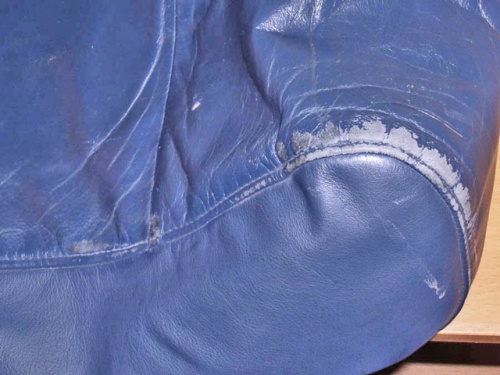
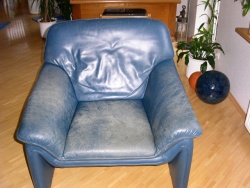
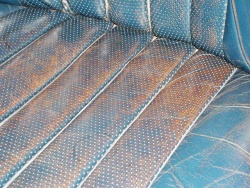
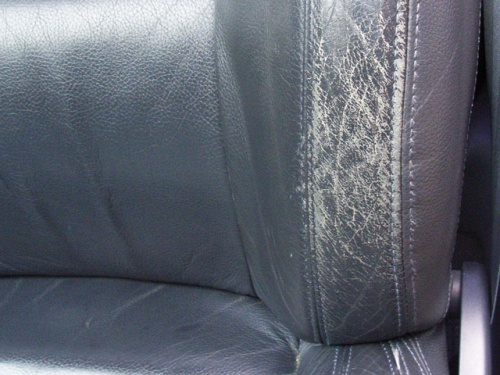
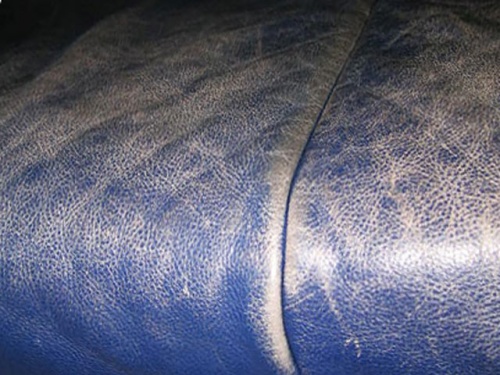
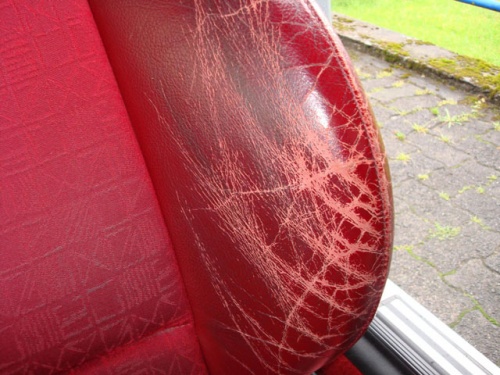
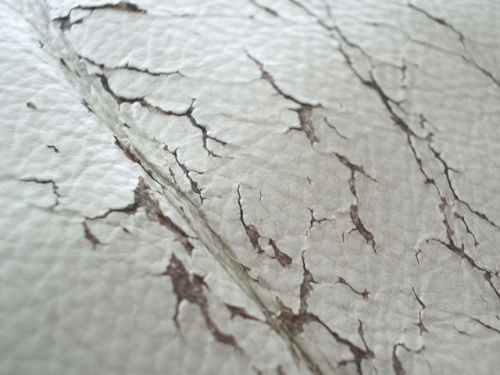
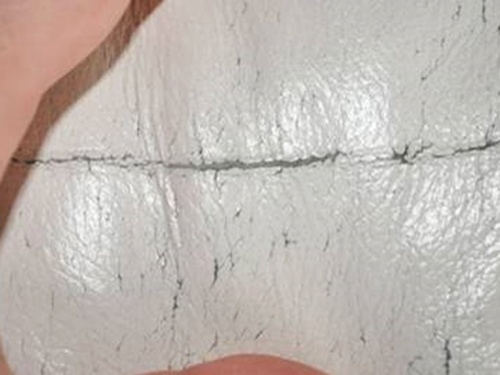
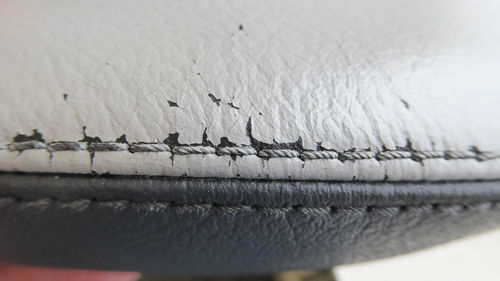
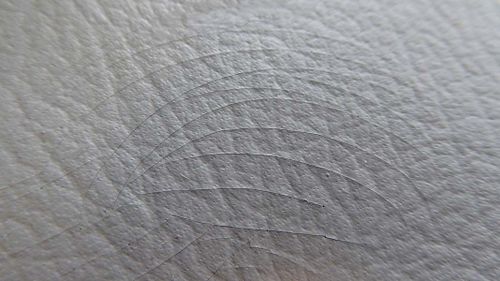
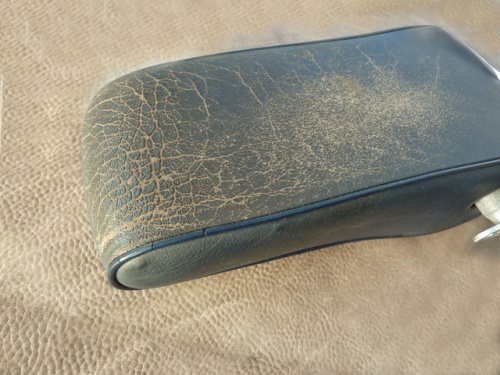
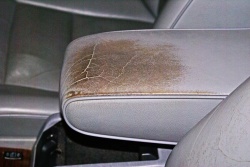
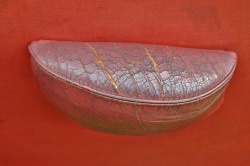
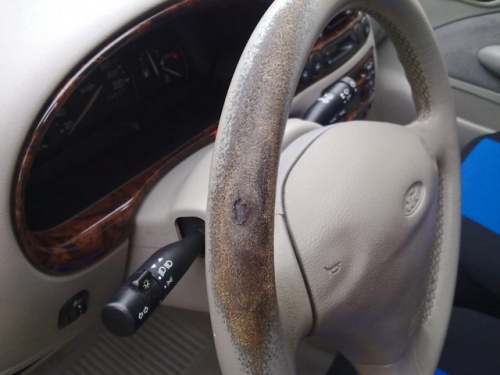
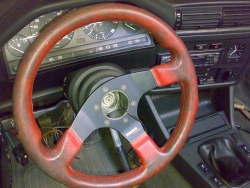
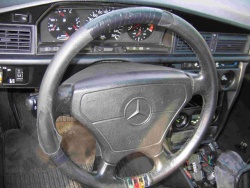
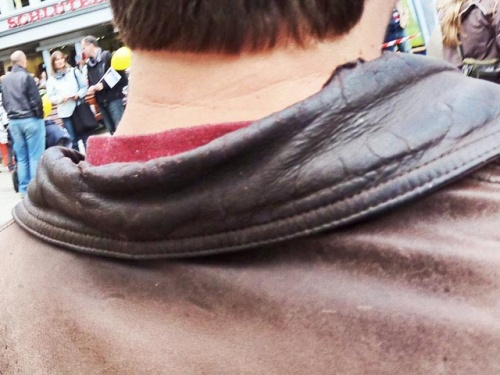
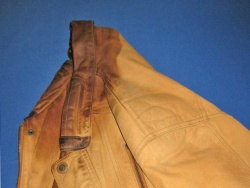
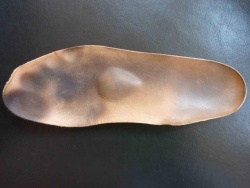
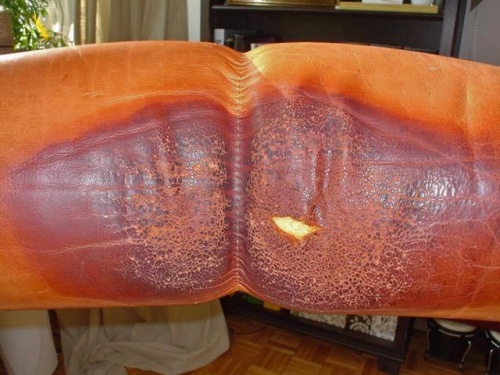
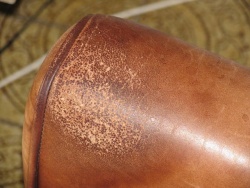
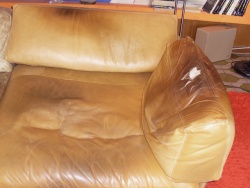
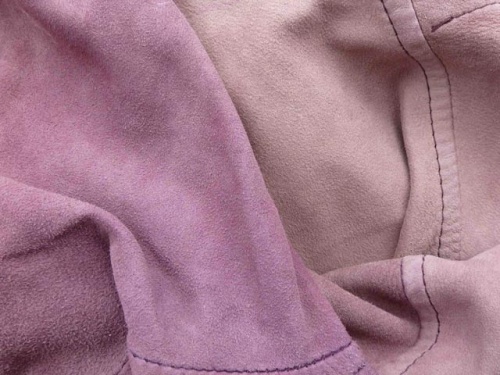
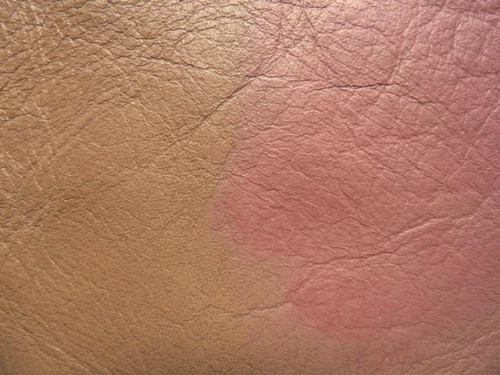
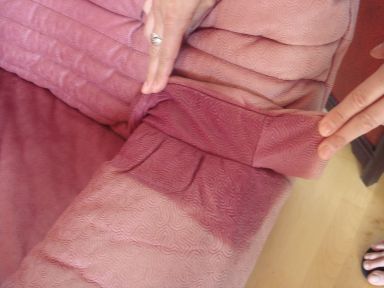
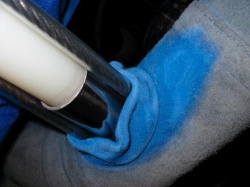
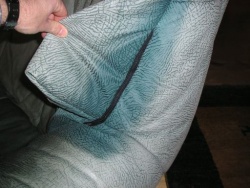
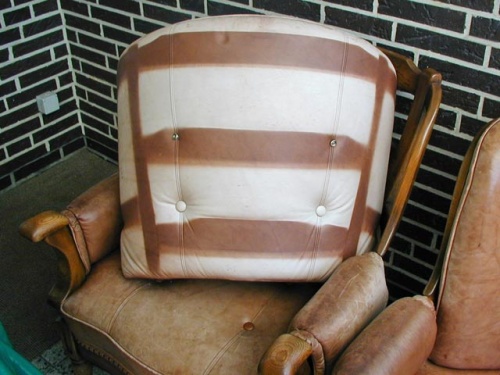
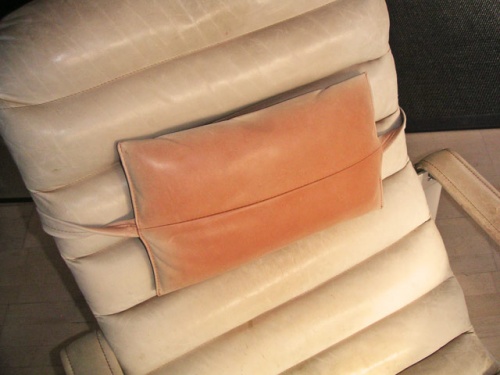
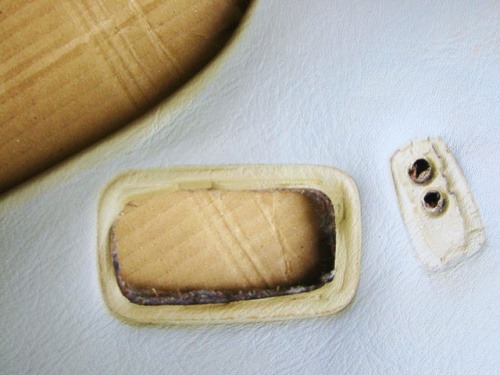
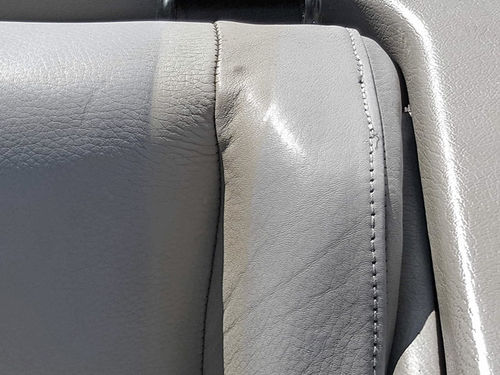
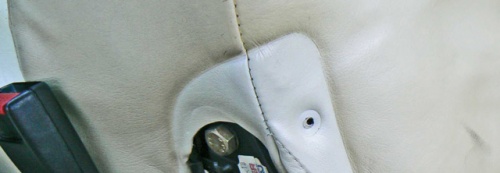
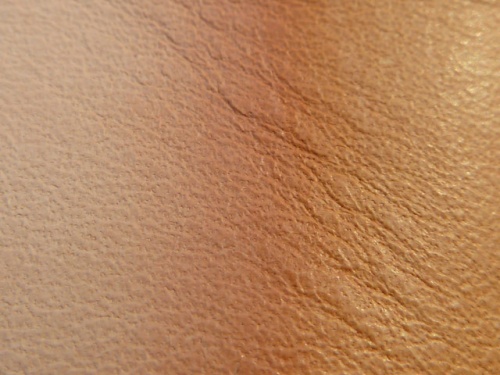
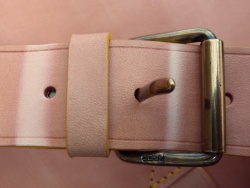
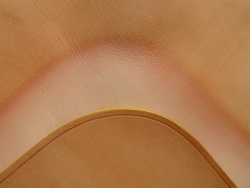
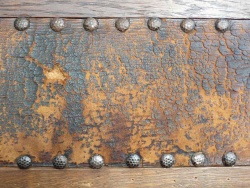
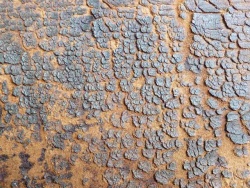
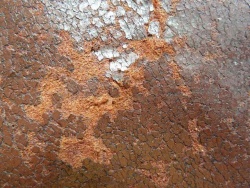
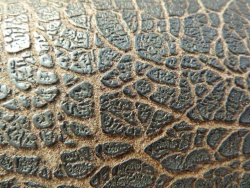
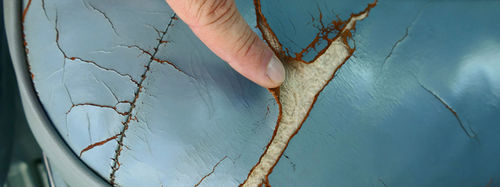
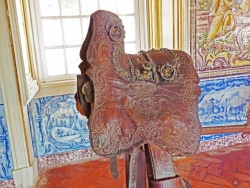
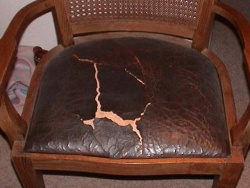
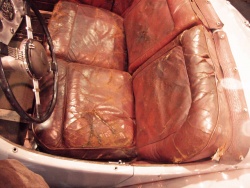
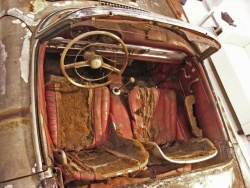
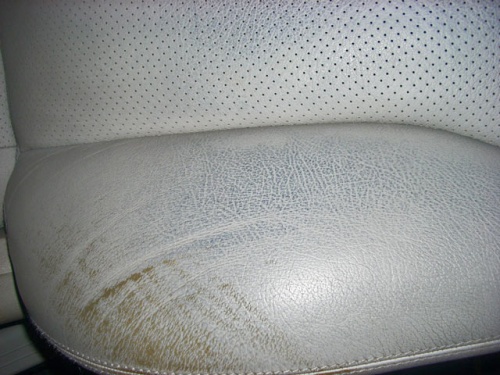
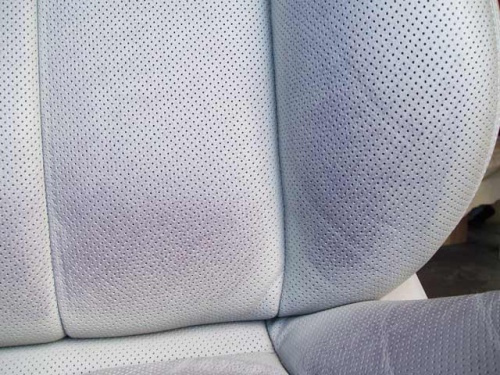
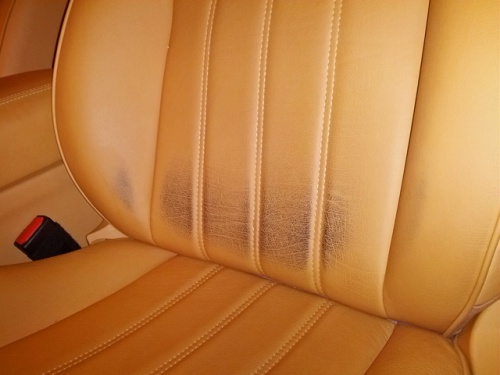
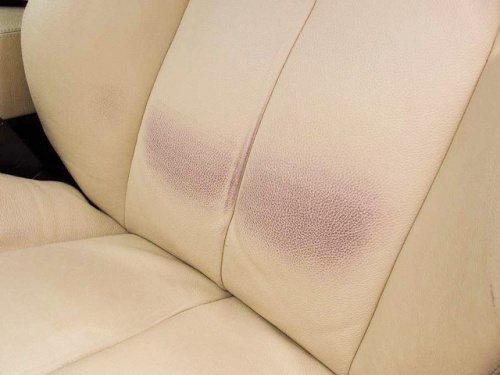
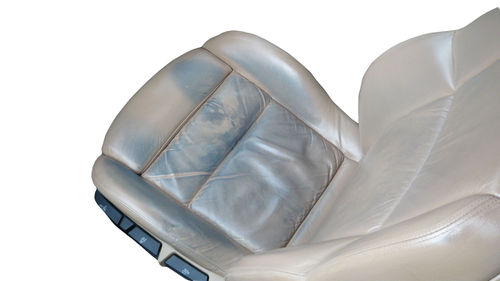
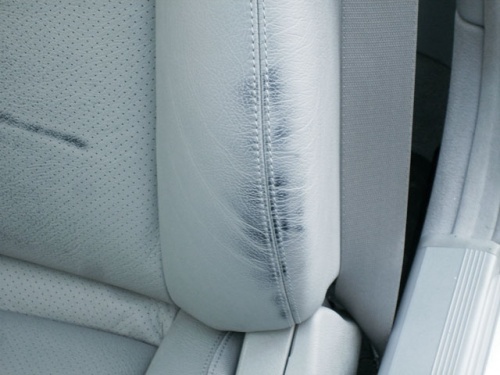
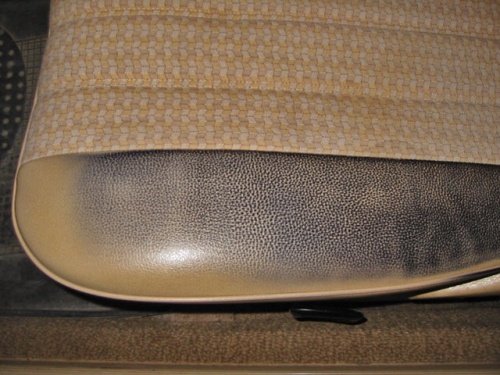
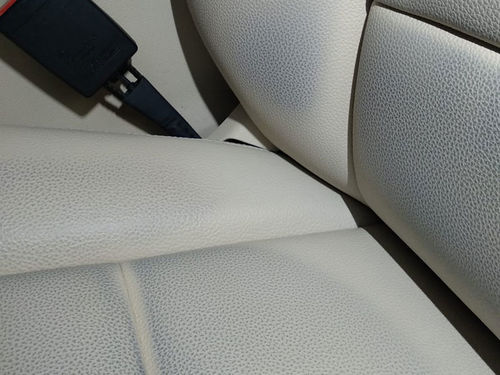
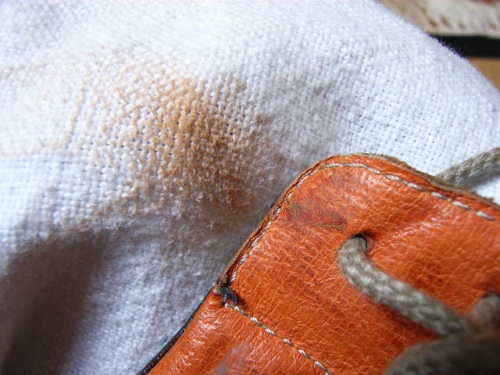
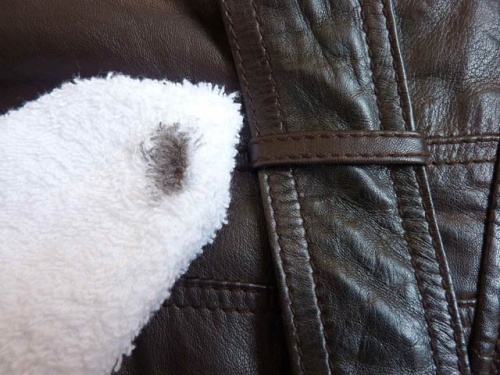
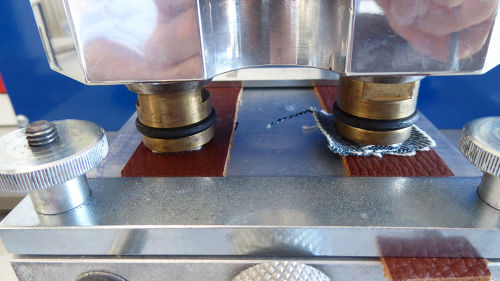
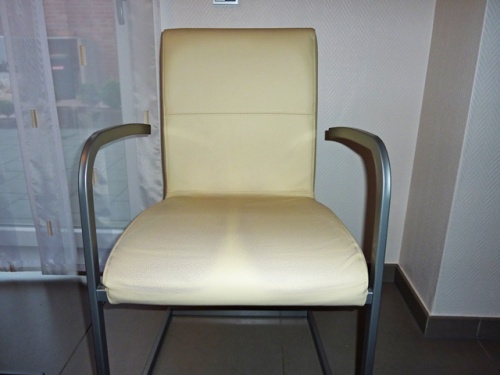
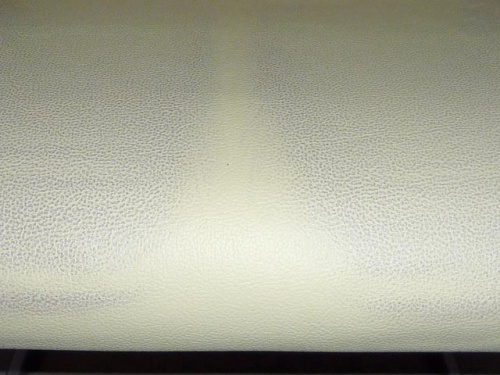
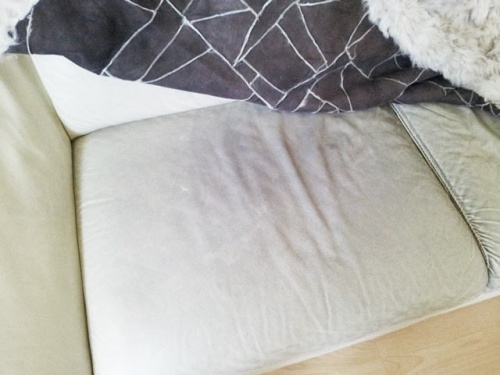
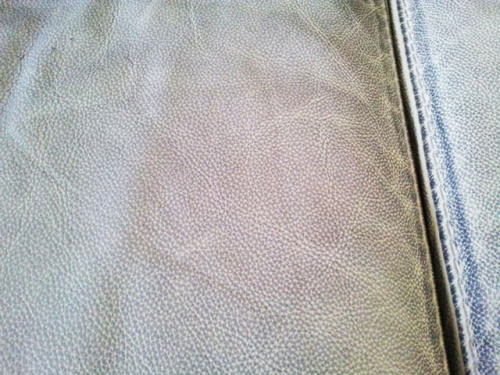
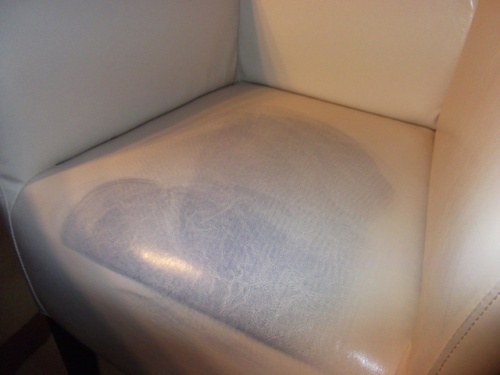
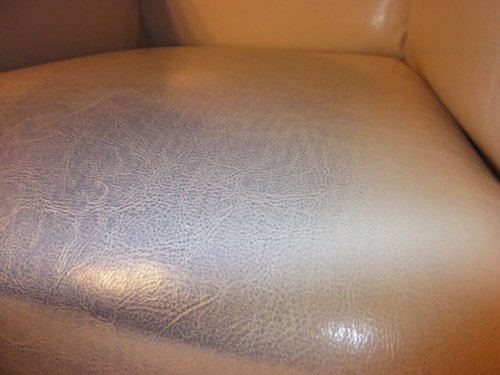
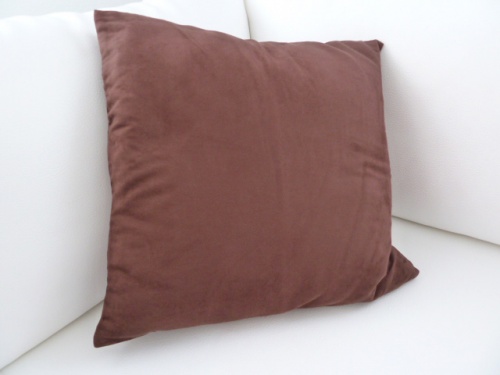
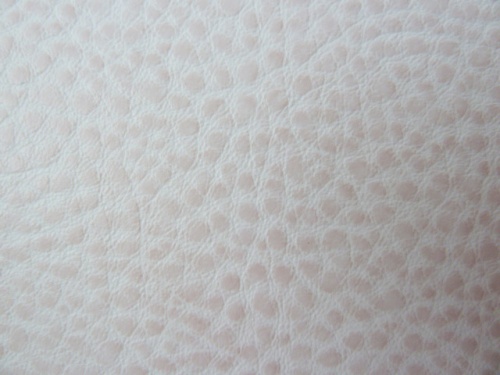
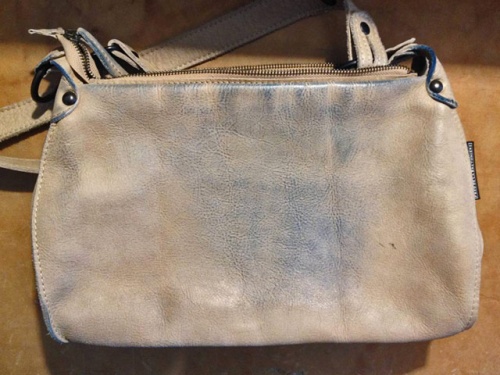
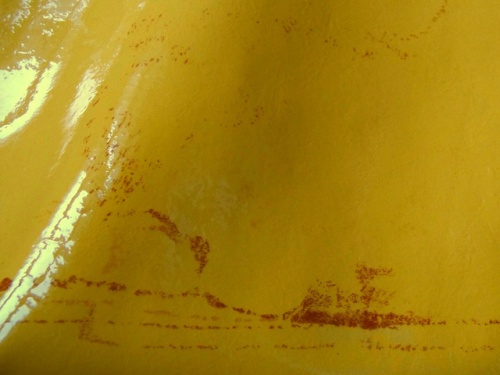

 a kotori web solution
a kotori web solution